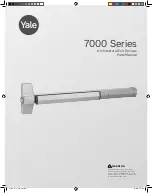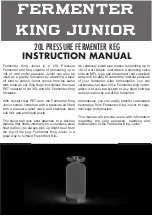
© 2016 Nelson Stud Welding, Inc.
Page 7
All Rights Reserved.
January 2016
Part No. 729-110-043 Rev. 1.02
1
Overview
The Nelson NCD+ stud welding gun is made to be used with Nelson NCD+ stud welding power
units, which utilize the capacitor discharge principal of stud welding. This system is designed to use
fasteners, which are manufactured with a small projection on the weld end and are welded by the
Contact method. Heat for fusion is obtained from an electric arc, which is established by flashing
away the small projection. The discharge of the welding current or energy stored in the capacitors
produces an arc that melts the end of the stud and a portion of the base material. The stud is
forced into the molten metal before the conclusion of the arc cycle. Upon cooling, a uniform cross
section bond is achieved. A special advantage of the capacitor discharge process is the limited heat
generated, and low penetration which allows the fasteners to be welded to thin and/or coated parts
opposite the weld side.
Contact welding is generally used with carbon steel and stainless steel especially when weld
appearance is not a prime consideration. The contact welding setup is easy and is tolerant to
workpiece flexing.
The welding gun is a “contact gun” which is suitable only for contact welding.
NOTE: Depending upon the weld setup established for any particular stud size or material, the
noise generated by the flashing away of the stud tip may exceed the allowable level established by
the Occupational Safety and Health Administration (Section 50-204.10 of the Federal Register, Part
II). For this reason, it is recommended that the stud welding operator and anyone working within
the immediate area of the stud welding operation use proper ear protection.
SAFETY SYMBOLS
ATTENTION! BE
ALERT! Your
safety is involved.
Used to call attention to immediate hazards which,
if not avoided, will result in immediate, serious
personal injury or loss of life.
Used to call attention to potential hazards which
could result in personal injury or loss of life.
Used to call attention to hazards which could
result in minor personal injury.







































